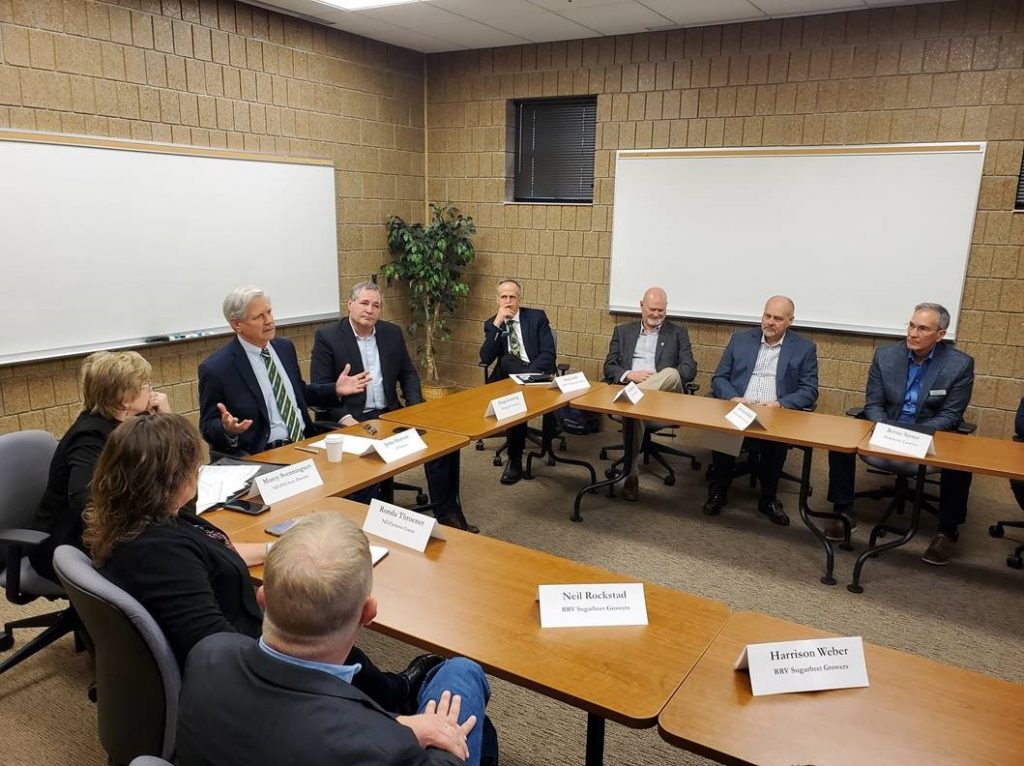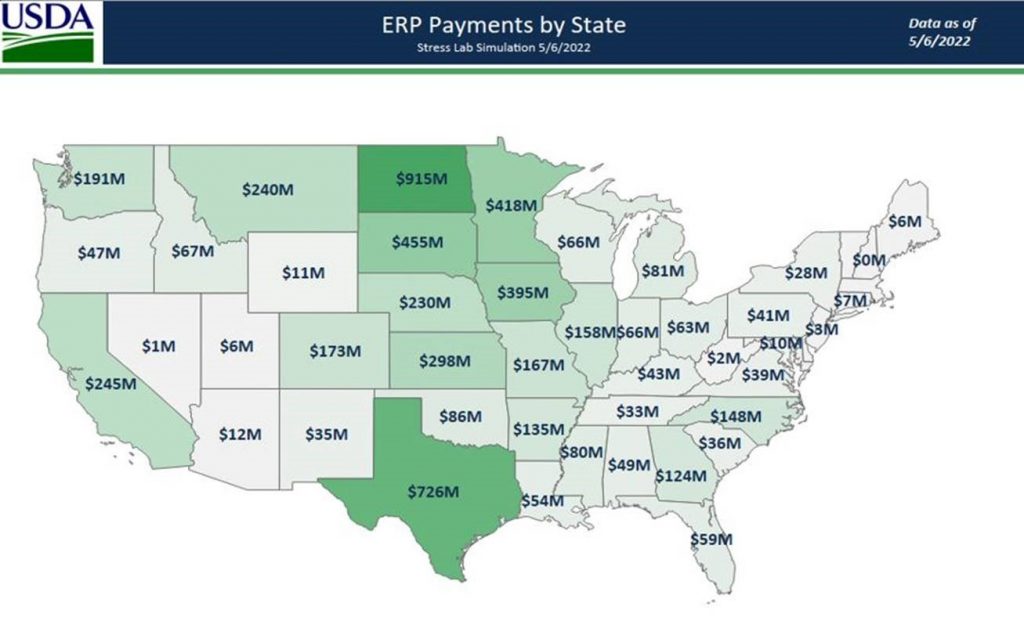

FARGO — Senator John Hoeven today held a roundtable discussion with local agriculture producers and commodity groups to review the details for phase one of the Emergency Relief Program (ERP). The program is funded using the $9.25 billion in row crop disaster assistance that Hoeven secured in September. Hoeven was also joined by Farm Service Agency (FSA) North Dakota State Director Marcy Svenningsen and North Dakota Agriculture Commissioner Doug Goehring.
After getting the funding in place, Hoeven met repeatedly with U.S. Department of Agriculture (USDA) officials, including Secretary Tom Vilsack, Under Secretary Robert Bonnie and Farm Service Agency Administrator Zach Ducheneaux, and pressed them to quickly distribute the aid and in a way that works for producers.
“From last year’s drought to rapidly rising costs and this year’s wet weather, our farmers and ranchers are facing real challenges. That’s why we’ve worked to get this assistance out to producers, helping them to recover from natural disasters and keep their operations going as they continue their essential work to provide Americans with the highest quality, lowest food supply in the world,” said Hoeven. “Our meeting today allows producers to give feedback to FSA to help ensure the signup process goes smoothly, while making sure North Dakota farmers have access to important information about the program.”
ERP Phase 1 Details

Securing Livestock & Row Crop Disaster Aid
Last September, Hoeven worked as the lead Republican on the Senate Agriculture Appropriations Committee to provide $10 billion in agriculture disaster assistance, which includes $750 million for livestock producers and $9.25 billion to aid row crop producers who suffered losses due to droughts, hurricanes, wildfires, floods and other qualifying disasters in calendar years 2020 and 2021.
USDA began sending phase-one Emergency Livestock Relief Program (ELRP) assistance to ranchers last month, with payments set at 75% of producers’ 2021 Livestock Forage Program (LFP) payment. Phase two will begin later this year.
Producers should contact their FSA county office or visit farmers.gov for more information.